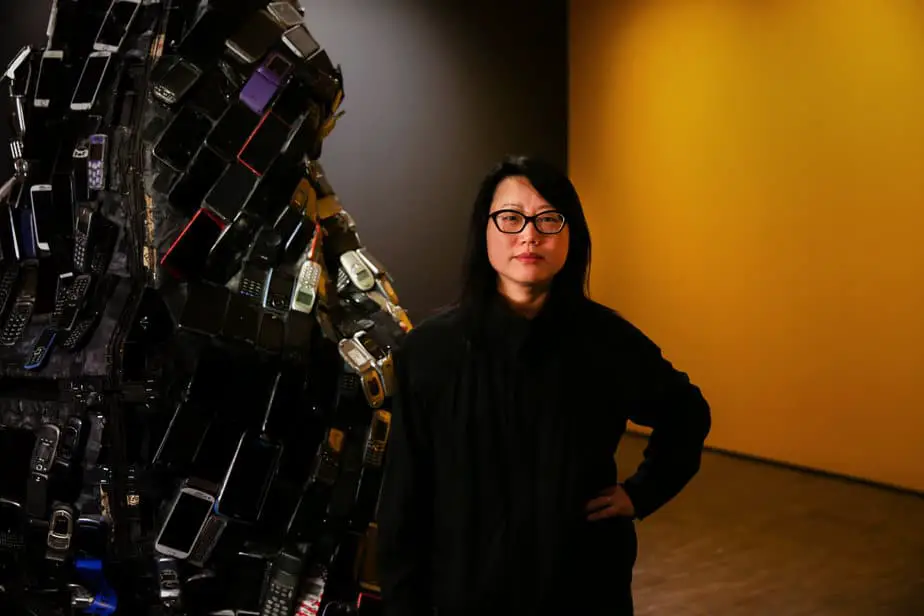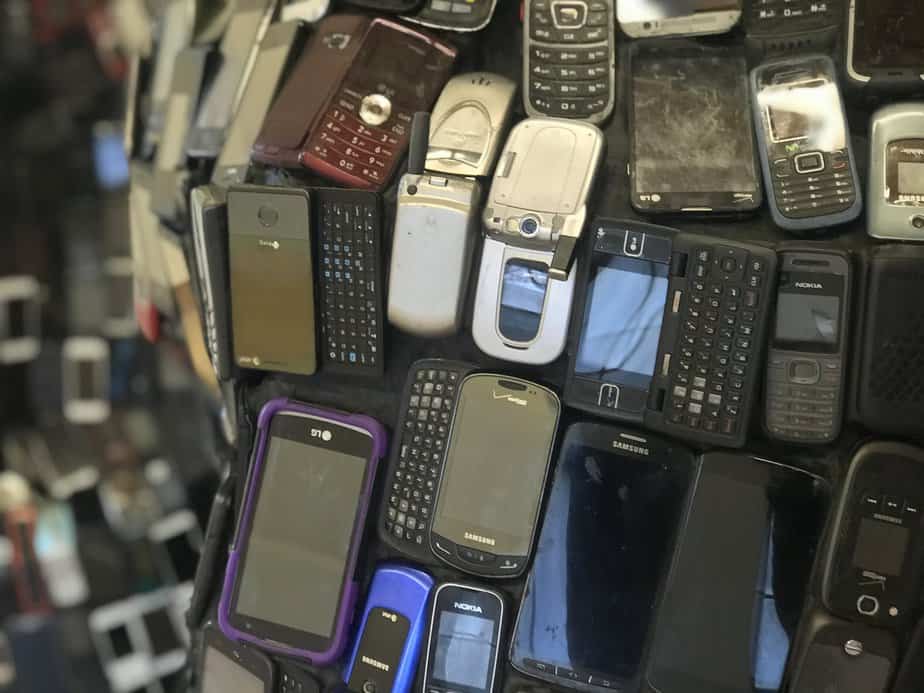To put it into context, e-waste is the most rapidly growing waste problem in the world. We generate about 50 million tons of it every year. This is equivalent to throwing out 1000 laptops every single second. In some places the amount of e-waste increases with 500% in the years to come. A lot of e-waste is shipped to Asia or Africa for “recycling”. This may sound auspicious, but in fact it’s just an easy and cheap way to get rid of the enormous amounts of e-waste we generate. A lot of it is simply burned—often by children. Children working in the recycling yards are at an even higher risk for damaging their health than adults.
For Pause, Shin transformed e-waste from the Bay Area—cell phones, smartphones, laptops and cables from the past 20 years—into a visually striking installation that evokes traditional East Asian scholars’ rocks and garden retreats. Sculptures made of tightly bundled cables also function as seating, inviting visitors to linger and connect in real time, hitting “pause” on their relationship with technology while considering the environmental and human costs of digital culture.
“I am always thinking about the waste stream, where objects come from and where they end up,” says Shin, who has created previous installations from discarded pill bottles, umbrellas and 35mm slides. “I wanted to use e-waste to bring attention to ethics and issues of sustainability in tech,” she explains. “Programmers are always racing to innovate, creating new software without considering how their work displaces hardware and makes functioning technology quickly obsolete.”
“The explosion of e-waste highlights its dual (and dueling) identities as both environmental scourge and potential economic resource,” reports Brook Larmer of the New York Times in his expose of the business behind e-waste, “though often laced with lead, mercury or other toxic substances, laptops and phones also contain valuable elements like gold, silver and copper. Yet barely 20 percent of the world’s e-waste is collected and delivered to formal recyclers.”
The artist constructed labor-intensive sculptures titled Huddled Masses made with over 3,000 mobile phones that are reminiscent of the scholars’ rocks in Chinese art and garden design thought to capture the essence of nature. Cables on the floor encircle the sculptures like waves. Approximately nine miles of Ethernet cables were wrapped around seven laptops, two computer towers and two hard drives to create the “e-bundle” seating. Together, these outmoded objects map our ever-growing footprint in the Anthropocene age, the geologic period defined by man’s impact on the planet.
“Pause is a potent reminder of our utopian desires, which imagine how technological innovation might make our world better while sometimes forgetting the value of what we already have. By drawing on the traditional ideals found in our historical collection in order to directly address some of today’s most pressing anxieties, Jean Shin is an exciting example of what it means for the Asian Art Museum to expand its contemporary art program,” says Jay Xu, the museum’s director and CEO. “I cannot wait to put down my own phone, take a seat and find a few minutes for deep reflection in a buzzing museum in the center of a busy city at the epicenter of the tech revolution.”
// Pause is now on view until May 24th., 200 Larkin St. (City Hall); asianart.org


